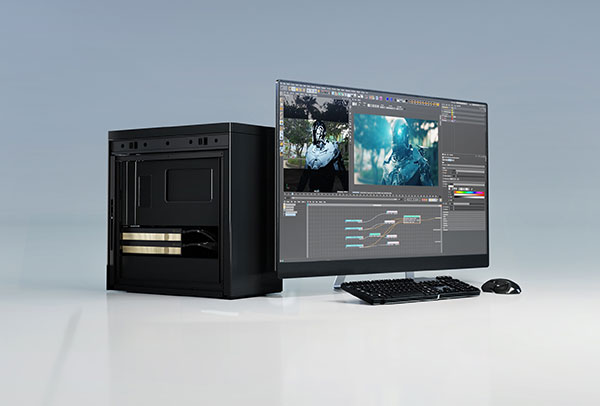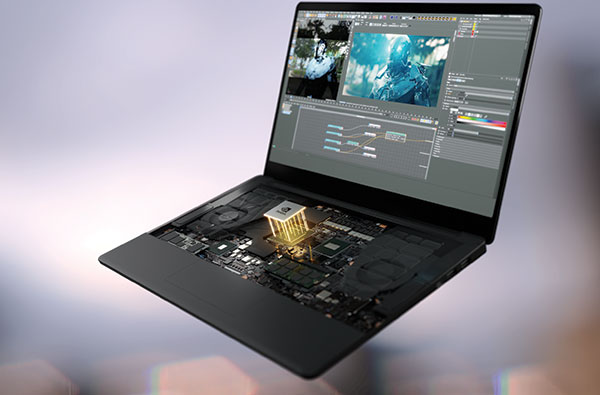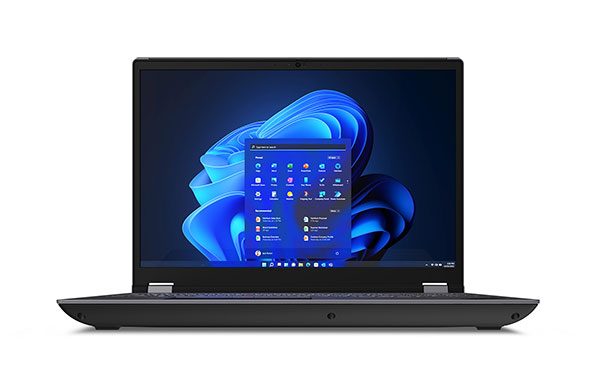Workflow Drives Workstation Selection
The decision to buy a tower or mobile workstation depends on engineering needs.

The NVIDIA RTX Visual Computing Platform is more than a single GPU. Image courtesy of NVIDIA.
Latest News
September 27, 2022
The pandemic changed where product design teams use their workstations. Most engineers found themselves working from home or in a home/office shuffle. Those who took their tower workstations home found them awkward to accommodate, loud to use in a home setting and nearly impossible to be flexible when it came to where they did their work. The end result was a surge in sales for mobile workstations.
“Ask anyone in IT if four years ago they thought everyone would be running collaboration software today,” says Allen Bourgoyne, a product marketing director for NVIDIA. At the time, products such as Zoom and Teams were not in common use. “What will happen three years from now?” he adds. “These are important questions to ask when considering a new workstation.”
The demand for workstation-class mobile computers increased about the same time as mobiles became—in many cases—as powerful as the desk-based workstations already in use. Some engineers are finding they can use a properly configured laptop as a desktop replacement. Now many potential workstation buyers are asking themselves and their vendor if they can get by with a mobile when they have been using a desktop computer for years. The consensus answer is a big “it depends.”
The key is workflow. “It always comes back to workflow,” says Bourgoyne. “What do you do? How do you work?” The needs of an engineer who often goes onsite skew the buying decision heavily toward a mobile workstation. The needs of a product designer who must create a virtual reality (VR) walkthrough of a new car skew the buying decision heavily toward a tower. Between those two extremes, the decision becomes one of trade-offs. Mobility is empowering, but is there enough power in the mobile for the user’s requirements?

Towers Make a Comeback
Workstation vendor Lenovo saw the big shift to mobile workstation in 2020, “but now we are seeing a bounceback to towers,” says Brooks Flynn, Lenovo’s director of desktop and mobile product development. “Physics can’t always be overcome; there are thermal limitations in mobiles.”
There is also a sense of the designer workstation, a defined workstation and setting that is distinct from mobile computing, Flynn adds. “Some users have decided they don’t want to be mobile and go work in the kitchen. There is a balance to find.”
So, does the decision process start with the applications or the hardware? “Yes to both,” says Lane Jesseph, Lenovo’s segment manager for mobile workstations. “The hardware is often cheaper than the software,” he notes. “Users should ask, ‘What apps? At what [usage] level?’ Then ask if they want portability.”
For vendors, it is key to work closely with customers. “Customers don’t always know what they want,” says Flynn. He adds that if customers can provide a dataset to test with various configurations, the vendor can give them more realistic recommendations.
“Sometimes they don’t need top of the line anymore,” Flynn adds, because the technology has improved rapidly over the years. Features that were high end in 2019 are midrange now.
Occasionally a customer will surprise the vendor. “We see customers who know what they want and have specific requirements,” says Jesseph. “They tell us, ‘We need this score on this benchmark’ and they don’t need higher. It is nice to see that level of technical expertise, but we also serve start-ups and solo users who do need guidance.”

Is It Really a Workstation?
Some thin-and-light enterprise notebook computers don’t qualify as workstations, notes Josh Covington, marketing director at boutique workstation vendor Velocity Micro.
If an engineer wants a mobile workstation, Covington says “the first distinction to make is if it is a true desktop replacement.” Is the CPU really a workstation-class CPU? Are the graphics processing unit (GPU) options suitable for professional workflows that are graphics-heavy?
When a mobile has a CPU designed for tower workstations, concessions must be made. You can’t just upgrade the CPU into an existing enterprise notebook computer and call it a mobile workstation. “[Vendors must] invest in cooling [and] in air flow and they have to sacrifice battery life. These processors are designed to be fast, not efficient,” Covington says.
The result from using more powerful CPUs means a heavier mobile workstation.
Applications engineers use fall into two broad categories: Those designed for single-core processing and those designed as “threaded” applications that use multiple CPU cores and possibly more than one GPU. Most CAD products are single-threaded; they work best on a fast single core. Rendering and simulation products are in transition from single-threaded to multicore capabilities. Heavy-duty rendering, large simulations and content creation for virtual reality will suck up all the GPU power available.
“The distinction on the processors is the big thing,” says Covington. “Buyers need to understand their need for overall power management, battery life and overall performance” before committing to any specific form factor.

Two Genre-Bending Workstations
Just as mobile workstations have been trending toward thinner, lighter and more powerful, and tower computers have been trending toward supporting the most demanding applications with multiple CPUs and GPUs, along comes a new class of workstations that defy easy categorization.
The Lenovo ThinkStation P360 Ultra is billed as offering “tower-like performance” yet is half the size of a traditional small form factor (SFF) workstation. Lenovo says the new model was a clean sheet design to see what the company could produce in a small chassis. It supports a mobile GPU, with several models as options. On the high end is the NVIDIA RTX A5000 mobile with 16GB RAM. This makes the P360 Ultra suitable for a variety of GPU-accelerated workflows including VR creation, GPU rendering and real-time visualization.
The second is not one particular workstation from a specific vendor, but a growing flock of workstations running the AMD Ryzen Threadripper PRO CPU. Lenovo was first to market, but since then, boutique vendors including Puget Systems, Velocity Micro and BOXX Systems have brought Threadripper PRO workstations to market. The latest version of the Threadripper PRO is the 5000 WX-Series, which offers 64 physical cores, 128 processing threads, 128 PCIe Gen 4 lanes and up to 2TB of eight-channel RAM. These raw specs make any workstation using the Threadripper PRO the most powerful single-socket workstation available.
The number of tower workstations running Threadripper PRO is growing, but for now there are no mobiles. As a sales rep told Digital Engineering through online chat, “they would just take up far too much power and generate too much heat to be viable in that form factor.”
Matching Components to the Task
In June 2022, DE published a list of workstation usage categories (entry level, mainstream, advanced) and the recommended hardware at each level.
These recommendations apply to tower and mobile models. You can use these recommendations as a guide to starting the search for new workstations, whether tower or mobile.
More Lenovo Coverage

More NVIDIA Coverage
Subscribe to our FREE magazine, FREE email newsletters or both!
Latest News
About the Author
Randall S. Newton is principal analyst at Consilia Vektor, covering engineering technology. He has been part of the computer graphics industry in a variety of roles since 1985.
Follow DE






